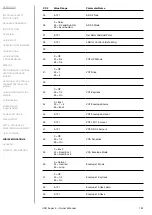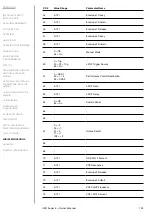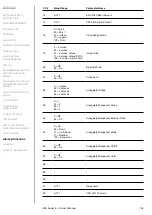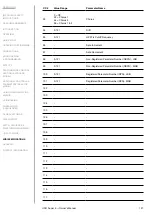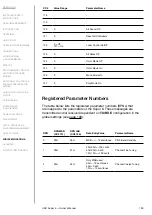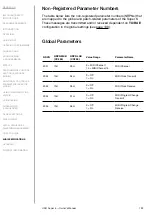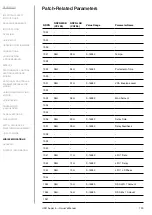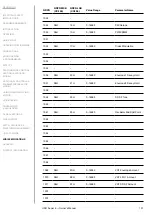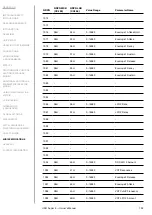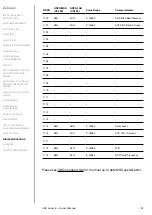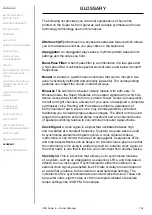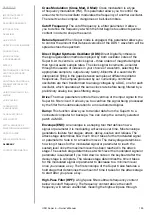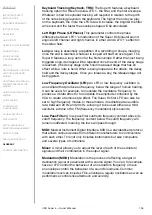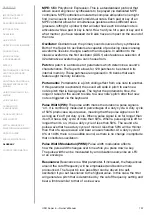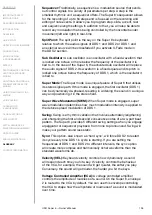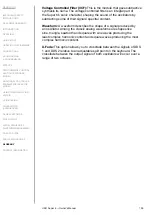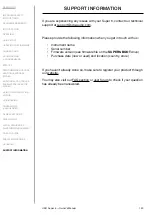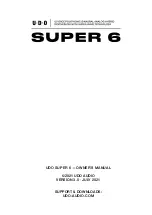
UDO Super 6 — Owner’s Manual
138
Sequencer:
Traditionally, a sequencer is a modulation source that sends
out control signals to a variety of parameters per step. A step is the
smallest rhythmic unit a sequencer offers. The Super 6’s sequencer allows
for the recording of up to 64 steps and is focused on the recording and
editing of note events. It allows you to program step, slide, accent, rest
and sequence length settings. In addition to that, you will also be able to
record any modulation that is being controlled by the horizontal bender
movement (left and right) in real-time.
Split Point:
The split point is the key on the Super 6’s keyboard
relative to which the audio signals of DDS 1 and DDS 2 or DDS 1 and
an external source will be crossfaded if you activate X-Fade mode in
the DDS 2 section.
Sub Oscillator: A sub oscillator is an oscillator with a fixed waveform that
is locked one octave or more below the frequency of the oscillator it is
tied to. In the case of the Super 6, the activated sub oscillator will replace
the audio signal of DDS 2. Its waveform is a fixed square and its pitch is
locked one octave below the frequency of DDS 1, which is the oscillator it
is tied to.
Super Mode:
The Super mode is a unique feature of Super 6 that utilises
its stereo signal path. If this mode is engaged, the first oscillator (DDS 1)
can be dynamically de-phased, resulting in widening the sound in a unique
way and positioning it in the stereo field.
Super Wave Modulation (SWM):
When Super mode is engaged, super
wave modulation determines how much modulation intensity is applied to
the detune spread modulation of DDS 1.
Swing:
Swing is a rhythmic variation that involves alternately lengthening
and shortening the first and second consecutive notes of a two-part beat
pattern. The Super 6 provides 5 different swing settings when you engage
arpeggiator or sequencer playback: from none to pronounced. Swing will
make your pattern sound less static.
Sync:
This option, also known as ‘hard sync’, will force DDS 2 to restart
its cycle every time DDS 1’s cycle is starting. If you are setting the
frequencies of DDS 1 and DDS 2 to different intervals, the sync option
will create more complex and harmonically richer waveforms than the
standard waveforms do.
Velocity (VEL):
Keyboard velocity controls how dynamically a sound
will respond each time you hit a key. If velocity controls the behaviour
of the VCA, for example, the sound will get quieter, the softer you play.
Conversely, the sound will get louder, the harder you hit the keys.
Voltage Controlled Amplifier (VCA): A voltage controlled amplifier
controls the amplitude or loudness of a sound. On the Super 6, envelope
2 is routed to the VCA by default. You can use this envelope controlling
the VCA to shape how the amplitude or loudness of a sound is modulated
over time.

